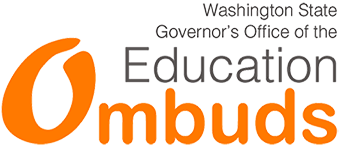1. Forming Partnerships with Schools
What is family involvement in education?
When families are involved, students achieve. Family involvement means the active participation by families and legal guardians in their students’ school lives. Family involvement must be done in partnership with teachers and other school staff. Every parent or family member has different skills, experiences and life circumstances, so we all have different ways to participate, support and enrich education for our students. The most basic kind of family involvement is to make sure that each student attends school every day after getting enough sleep, eating a healthy breakfast and dressing appropriately.
What you should expect from your school
- An atmosphere that is welcoming and encourages you to become a partner in your child’s education.
- Respectful, friendly treatment from school staff.
- Timely, thoughtful responses to your concerns.
- Information about how to help students with homework and support learning at home.
- Partnerships with community organizations that help families.
- In diverse schools: information for families translated into languages in addition to English.
Why not leave education to the school?
It is a partnership. The idea of family participation in U.S. schools began in the late 1800s. While families and schools working together seemed like a good idea for many reasons, people did not realize that a side benefit would be strong gains in student learning. However, national research in the last 40 years has demonstrated that the more families participate in the education of their students, the more students succeed.
What is the school’s role?
Schools should extend a hand to families. Some school districts have adopted family involvement policies while others are more informal about interacting with families. Schools that receive federal Title I funds are required by law to have family involvement activities, and some receive special funds to help with those efforts. There is no Washington State law that says schools must involve families, but the most successful schools do.
How do I create a partnership with the school my student attends?
Treat it like any relationship. Remember it is going to take some work to be successful. In your advocacy, you are likely to find yourself across the table from the same school district personnel more than once. You should try to figure out how to build good relationships as you advocate for what your student needs to succeed.
An involved parent is an informed parent. Make sure that you become familiar with the way your school and school district function. Understanding the way school districts are structured, including whom within a district has authority to make decisions, will help you be an effective advocate.
Family involvement matters
National research shows that when parents and schools work together as partners, students succeed.
Get involved in your student’s education
There are several ways to be an active participant in your student’s education:
- Start the relationship out right: let school officials know you respect them and will work with them.
- Attend meetings, parent teacher conferences, and school events.
- Check in with teachers regularly, not just when there is a problem.
- Know as much as you can about your student’s education. Ask for and look over school records and progress notes to better understand how your student is doing and what they might need.
- Follow-up on reported problems.
- Respond to all school communications promptly.
- Ask your student regularly how they think things are going.
- Look for chances to help your student communicate their thoughts and feelings to teachers and others.
- Let the school know you will follow up on important issues concerning your student.
- If a problem arises, always ask for and listen to the school’s side of the issue.
- Make sure the school has information needed to provide the right kind of education for your student. Give the school this kind of information every chance you get.
